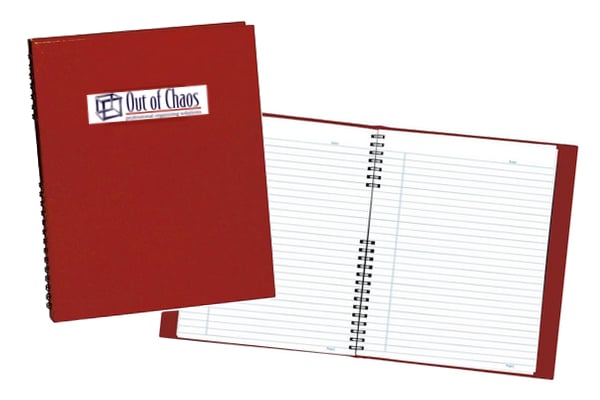
We all have that neverending list of things to do. We complete one task, and 10 more take its place. The key to getting from to-do to to-done is:
- Managing your task list;
- Creating transitional holding patterns;
- Planning your day by scheduling your commitments.
Often your to-do list is nothing more than a list of intentions (someday, when I find the time). Adding to this dilemma are various lists in the form of scraps of paper, post-it notes, and flags in your email correspondence. As a result, the feeling of overwhelm is almost too much to bear.
Keeping too many lists forces you to use your diminishing time to search for information that you know you have written down somewhere. I highly recommend consolidating all your tasks into one to-do list and keeping only one significant journal that you take everywhere.
My Favourite Way to Create a To-Do List
My personal preference (since I am a doodler) is the Blueline NotePro A9C.83 (pictured above). I prefer the red one since I can easily see it in a pile of white papers and manila folders. Useful features are:
- The book lies completely flat.
- The stiff but flexible cover can fold back.
- There is a date prompt for each page.
- The pages are perforated to tear off cleanly.
- There is a storage pocket in the back of the book for loose papers and business cards.
- There are self-adhesive tabs and an index sheet.
For those comfortable in the electronic format, Microsoft Outlook has a Tasks feature is an electronic to-do list. Further to this, users can also sync this task feature with their smartphone for greater flexibility while they are on the go.
Capturing all your tasks in one area may be a start, but you still have that long road ahead to completion. The challenge is that huge pile in the middle (the trail of paper that comes with outstanding projects). What do you do and where do you put things during the transition from ‘To-Do’ to ‘To-Done’? We often lack these transitional holding patterns and end up deferring items in a pile on our desk. The problem is, when you put something down on the desk, the next ‘later’ item will cover it. The key is to determine a location in your home or office to accommodate the unfinished tasks.
Getting things done on your task list is all about scheduling time to act on them. Use your consolidated to-do list as a planning tool to prioritize your activities. Priorities always change, so having all your tasks in one area gives you the power of managing what comes first. Doing this critical step allows you to manage your time and make commitments by scheduling priorities on your calendar.
Contact us for our in-house Time Management workshops.
Image courtesy Staples Canada.
